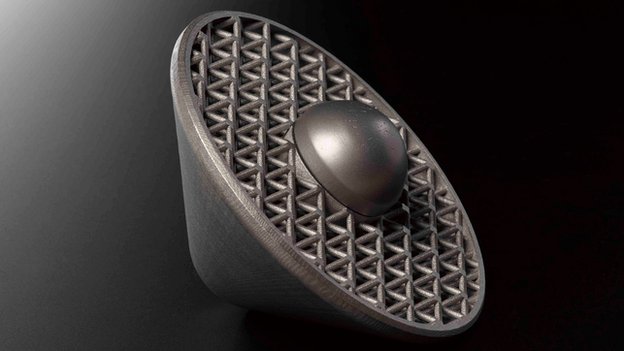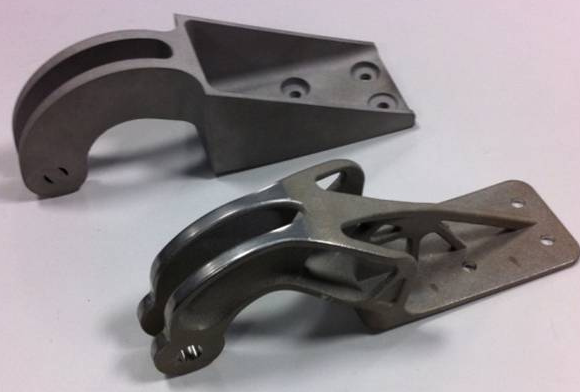Taking 3D printing into the metal age
October 16, 2013

This concept Mars probe features 3D-printed components (credit: ESA)
The European Space Agency (ESA)and the EU, together with industrial and educational partners, are developing the first large-scale production methods to 3D-print complex 3D-printed parts made of metal that can withstand temperatures at 1000°C — fit for space and the most demanding applications on Earth.
3D printers are expected to revolutionize the way we live but until recently they could work with only plastic, which is not very useful for many industrial applications.
3D printing, formally known as additive manufacturing, can create complex shapes that are impossible to manufacture with traditional casting and machining techniques. Little to no material is wasted and cutting the number of steps in a manufacturing chain offers enormous cost benefits.

Foreground: topology optimized A320 nacelle hinge demonstrator; background: conventional A320 nacelle hinge (credit: EADS)
The AMAZE project — Additive Manufacturing Aiming Towards Zero Waste & Efficient Production of High-Tech Metal Products — began in January.
Factory sites are being set up in France, Germany, Italy, Norway and the UK to develop the industrial supply chain.
The project was launched pujblicly on Tuesday at the London Science Museum.